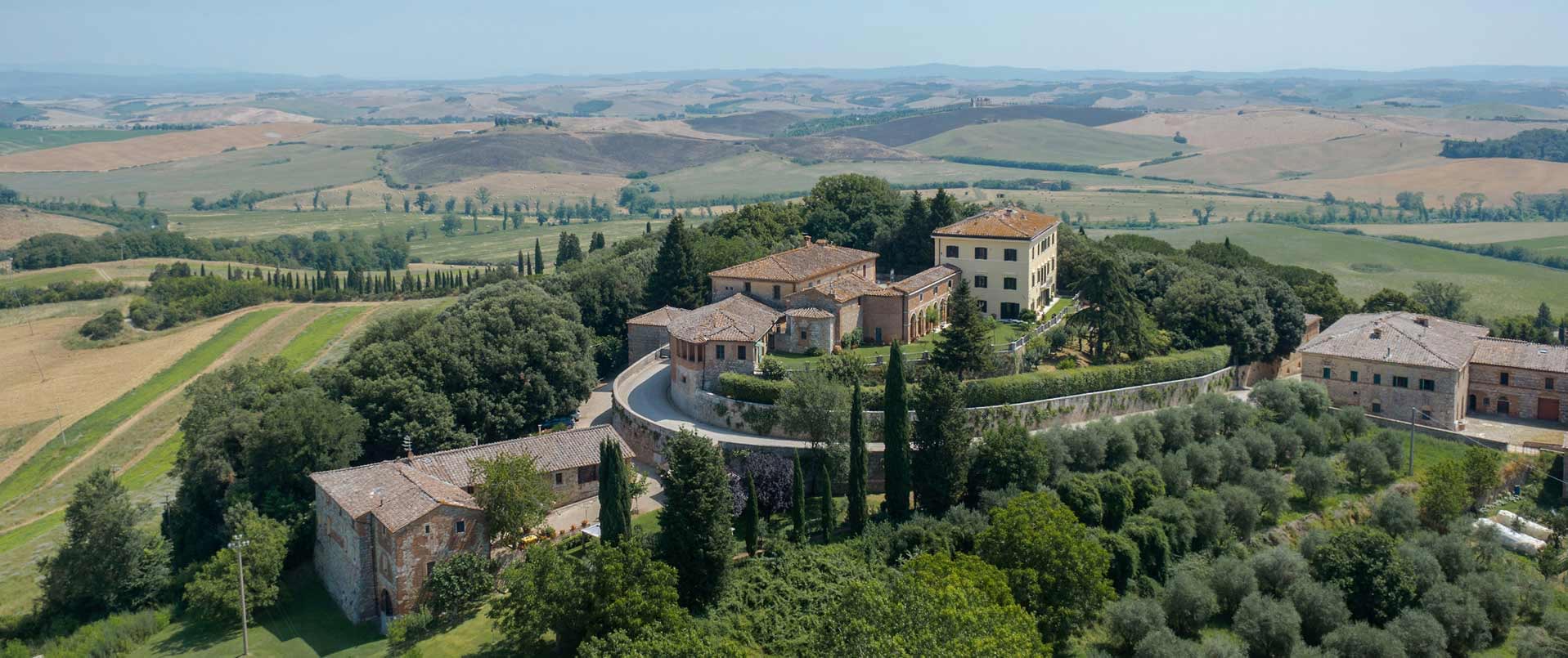
The history of Villa della Pergola begins in the late 1800s, in 1875 to be precise, when two Scottish gentlemen, George Henderson Gibb and General William Montagu Scott McMurdo, were the first Britons, along with their families, to spend an entire winter in Alassio and to decide the following year to purchase two large plots of land – the Parco Fuor del Vento and the Molino di Sopra – on the hill of Alassio in the Costa area. General McMurdo built Villino della Pergola on an existing residence belonging to the Counts of Lengueglia and named it ‘Casa Napier’ in honour of his father-in-law, General Sir Charles Napier, whose statue is located in London’s Trafalgar Square.
The Villino was designed and constructed in the Anglo-Indian style, as was customary for British people who had lived for most of their lives in India as military personnel, civil servants or businessmen. The building spans three levels and features a large loggia, in line with the traditional design of British homes built in India and Malaysia for officials of the British Empire. In 1880, the McMurdo family began work on Villa della Pergola, a larger building situated on a slightly lower elevation. This structure was built with eclectic taste. It included a large loggia, but incorporated more precious and opulent elements such as a dome covered in polychrome Albisola majolica, an abundance of marble and a fountain near the grand staircase. The McMurdo family also designed the surrounding park, envisioning it as an extension of the Villa’s interior spaces toward the Mediterranean sun and flora. The park was developed across multiple terraced levels, following the natural slope of the hill and making room, among olive and orange groves, for Canary Island, Washingtonia, and Dactylifera palm trees and, of course, cypresses, a tribute to the Anglo-Florentine colony’s admiration for Tuscan landscapes and avenues.
When General McMurdo passed away in Nice in 1894, his widow Lady McMurdo and the general’s children sold the property to Sir Walter Hamilton-Dalrymple, a Scottish baronet from an old and noble loyalist family from North Berwick in Scotland. In 1908, William Scott described the Villa in his historical-artistic guide ‘The Riviera’ as follows: “A worthy rival to the famous Mortola gardens of Sir Thomas Hanbury is to be found in the superb grounds of the Villa della Pergola, belonging to Sir Walter Hamilton Dalrymple, where a real love of nature, an intimate knowledge of gardening, and a perfect taste in arrangement, combined with judicious and generous expenditure, have produced one of the marvels of the Riviera”. The Dalrymples retained ownership of the Villa for about twenty years until 1922, when Sir Hew Clifford Hamilton-Dalrymple, the ninth baronet, sold the residence to Daniel Hanbury, second son of Sir Thomas Hanbury of Mortola. The latter, an excellent businessman and the owner of the Gardens of Mortola, had recognised Alassio’s potential as a winter climate resort, foreseeing it achieving success similar to that of Menton, Bordighera and San Remo. As a result, upon his death in 1907, he entrusted his son Daniel with managing the real estate activities he had started in Alassio.
The Hanbury family, as expected, played a pivotal role in completing the Villa’s garden, introducing various South American cacti, collections of cycads and Australian eucalyptus, and other types of exotic plants from the Mortola Botanical Garden. This significantly expanded the variety of species in the Villa’s park. At the outbreak of World War II in 1940, the Hanbury family, like many other British residents on the Riviera, returned to England. Daniel, now a widower, married Ruth Hardinge, who also hailed from an English family in Alassio. In 1946, the Hanburys returned to Alassio to resume the work that had been interrupted by the war. Unfortunately, Daniel passed away suddenly in 1948, taking with him the vision that had established Alassio as a prestigious winter climate resort.
Ruth moved back to live at Villa della Pergola, gathering around her a small community of Anglo-Alassio residents, a shadow of the once-thriving pre-war English population. Her springtime parties, held during the blooming of the wisterias, became renowned, drawing guests such as writer Cecil Roberts, who dedicated his book ‘Portal to Paradise’ to Alassio, and the Bishop of Gibraltar, who visited Anglican communities on the Riviera every spring and stayed with Ruth as her guest.
In 1925, Alfred Hitchcock filmed scenes from his first film ‘The Pleasure Garden’ on Alassio beach and in the park of the Villa. In 1957, Oscar-winning director Guy Green filmed ‘The Snorkel’ at Villa della Pergola, starring Betta St. John, Peter Van Eyck and Mandy Miller. The Villino was used as a guest house for the Villa in the 1960s and 1970s by writer and painter Carlo Levi, who immortalised the landscape of Alassio in many of his paintings.
In 2006, the villas and park were sold at a judicial auction and purchased by a group of friends led by Silvia and Antonio Ricci, who aimed to prevent extensive real estate speculation.
 Accommodation
Accommodation
 Co-Working
Co-Working
 Film sets
Film sets
 Gardens
Gardens
 Parks
Parks
 Private events
Private events
 Residences
Residences
 Spirituality
Spirituality
 Visits
Visits
 Weddings
Weddings
 Gardens
Gardens  Historic Homes open to visitors
Historic Homes open to visitors  Nature
Nature  Restaurants
Restaurants